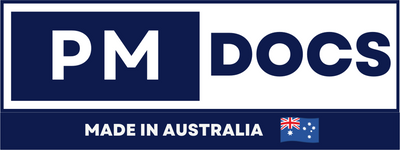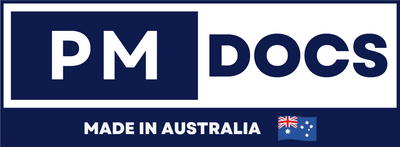PMO Charter Template
Introduction
A PMO (Project Management Office) Charter is a critical document that outlines a PMO's purpose, objectives, and responsibilities within an organization. It is a roadmap for the PMO's strategic direction and guides its operations. Creating a PMO Charter can be complex, requiring careful consideration of various factors and stakeholders. Using a PMO Charter Template can be highly beneficial in simplifying this process and creating a comprehensive and effective PMO Charter. This article provides insight into the importance of a PMO Charter and offers a downloadable PMO Charter Template that can be customized to meet your organization's specific needs.

Purpose of a PMO Charter
- Definition of the PMO's Objectives and Scope: The charter clearly outlines the goals and objectives of the Project Management Office (PMO) and provides a clear definition of the scope of its activities. It helps establish a common understanding among stakeholders regarding what the PMO will and will not do.
- Alignment with Organizational Strategy: The charter ensures that the PMO's activities align with the organization's overall strategic objectives. It helps to demonstrate how the PMO will contribute to the organization's success by providing value-added services and supporting project delivery in line with strategic goals.
- Governance and Decision-Making Structure: The charter defines the PMO's governance structure, including key stakeholders' roles and responsibilities. It outlines the decision-making authority and escalation processes, ensuring that decision-making is transparent, efficient, and aligned with organizational policies and procedures.
- Roles and Responsibilities: The charter clearly defines the roles and responsibilities of the PMO team members, including the PMO director, project managers, and other staff. It ensures that everyone understands their roles and expectations, promoting effective teamwork and collaboration.
- Stakeholder Engagement: The charter identifies critical stakeholders of the PMO and defines how they will be engaged throughout the project lifecycle. It ensures that stakeholders are appropriately involved in decision-making processes, keeping them informed and engaged in the progress of projects.
- Performance Measurement and Reporting: The charter establishes the metrics and reporting requirements for the PMO, ensuring that its activities are measured and reported against predefined targets. It helps demonstrate the value and benefits that the PMO delivers to the organization.
- Change Management: The charter helps manage change by providing a framework for implementing and communicating changes related to the PMO's structure, governance, processes, and tools. It ensures that changes are well-planned, communicated, and implemented effectively.
- Risk and Issue Management: The charter establishes processes for identifying, assessing, and managing risks and issues related to PMO activities. It ensures that risks and issues are appropriately addressed and mitigated to minimize their impact on project delivery.
Critical Components of a PMO Charter
- Purpose Statement: This section describes the overall purpose and objectives of the PMO. It highlights the need for a centralized project management function and how it aligns with the organization's strategic goals.
- Goals and Objectives: This section outlines the specific goals and objectives the PMO aims to achieve. It can include improving project success rates, standardizing project management processes, enhancing resource allocation, or driving organizational change.
- Scope and Authority: This section defines the boundaries and authority of the PMO. It clarifies the projects, programs, or portfolios that fall under the PMO's jurisdiction and outlines its decision-making powers.
- Organizational Structure: This section describes the organizational structure of the PMO, including reporting lines, roles, and responsibilities. It outlines the critical positions within the PMO and their respective functions.
- Stakeholders: This section identifies the key stakeholders, both internal and external, who are involved or impacted by the PMO's activities. It highlights their roles and responsibilities and how the PMO will engage and collaborate with them.
- Governance and Processes: This section outlines the governance framework and processes that the PMO will establish to govern project delivery. It includes project selection criteria, prioritization methods, project management methodologies, and project performance monitoring and reporting.
- Deliverables and Services: This section describes the specific deliverables and services the PMO will provide to support project delivery. It can include project management training, tools and templates, project reviews, lessons learned, and performance metrics.
- Key Performance Indicators (KPIs): This section defines the KPIs that will be used to measure the success and effectiveness of the PMO. It can include metrics such as project success rates, on-time delivery, budget adherence, customer satisfaction, and resource utilization.
- Risks and Mitigation Strategies: This section outlines the potential risks and challenges the PMO may encounter and provides strategies to mitigate or address them. It demonstrates proactive risk management and ensures that potential barriers to success are identified and managed.
- Approval Process: This section outlines the process for approving and reviewing the PMO charter. It identifies the key stakeholders who need to review and approve the document and specifies any revisions or amendments that may be required in the future.

Guidelines for Creating a PMO Charter
1. Introduction
a. Start with a brief introduction of the organization and its overall objectives.
b. Explain the need for establishing a PMO and its role in achieving those objectives.
c. State the purpose of the PMO charter and its intended audience.
2. Mission and Objectives
a. Define the mission of the PMO, explaining its overall purpose and critical goals.
b. Clearly state the objectives that the PMO aims to achieve.
c. Align the PMO's mission and objectives with the organization's strategic goals.
3. Scope
a. Define the scope of the PMO – whether it will support all projects or specific programs.
b. Specify the types of projects or initiatives that fall within the PMO's responsibility.
c. Describe any governance or oversight roles that the PMO will have.
4. Organizational Structure
a. Define the reporting lines and the position of the PMO within the organization's hierarchy.
b. Describe the roles and responsibilities of the PMO staff, including any specific functions or expertise required.
c. Highlight any relationships or collaborations with other departments or stakeholders.
5. Governance and Decision-Making
a. Outline the decision-making processes within the PMO.
b. Explain how the PMO will interact with other departments, stakeholders, and project teams.
c. Define the governance framework that the PMO will follow in terms of project selection, prioritization, and resource allocation.
6. Services and Processes
a. Describe the services provided by the PMO, such as project management methodologies, tools, and templates.
b. Explain the processes, standards, and best practices that the PMO will follow.
c. Specify any key performance indicators or metrics that will be used to measure the PMO's success.
7. Roles and Responsibilities
a. Define the roles and responsibilities of the individuals or teams involved in the PMO.
b. Clarify the expectations and accountabilities of the PMO staff, project managers, and other stakeholders.
c. Outline the level of authority and decision-making power held by the PMO.
8. Communication and Reporting
a. Explain the communication channels and reporting mechanisms that the PMO will use.
b. Define the frequency, format, and content of status reports, progress updates, and other communication activities.
c. Identify the key stakeholders who will receive regular updates from the PMO.
9. Risk Management
a. Describe how the PMO will handle and mitigate risks related to projects or programs.
b. Define the processes and procedures for risk identification, assessment, and response.
c. Explain the role of the PMO in promoting a risk-aware culture within the organization.
10. Conclusion
a. Summarize the key points covered in the PMO charter.
b. Restate the mission, objectives, and scope of the PMO.
c. Provide information on how the organization will review, update, and communicate the charter.
Remember to tailor the above guidelines to your organization's needs and expectations.
Conclusion
In conclusion, having a PMO charter template is essential for successfully implementing and managing a Project Management Office (PMO). This comprehensive document outlines the PMO's scope, objectives, roles, and responsibilities, serving as a guiding framework for the organization. Using our PMO charter template, you can save time and effort in creating a customized charter that aligns with your specific needs and objectives. Streamline your PMO operations and ensure the success of your projects by downloading our PMO charter template today.










